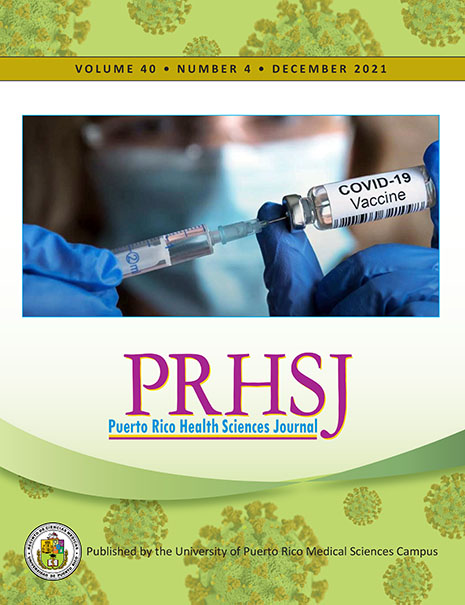Resumen
Objective: Strongyloidiasis is a parasitic infection classified by the World Health Organization as a neglected tropical disease. Although predominantly asymptomatic, it can become a life-threatening disease in an immunocompromised host. Epidemiologic studies in the Western Hemisphere are scarce, but even more scarce are descriptions of the natural course of this disease. Our objectives were to identify the different manifestations and outcomes of Strongyloides stercoralis infection in the Hispanic veteran population in Puerto Rico. We also discuss the importance of pursuing a timely diagnosis in high-risk patients migrating from or traveling to endemic areas, regardless of their symptomatic status. Methods: This was a single-center, retrospective record review study involving patients diagnosed with S. stercoralis via serology, stool samples, or organ biopsies, from 2008 through 2014. Results: A total of 270 patients tested positive; 210 (77.8%) were asymptomatic. The mean age at diagnosis was 75.4 years old. Symptomatic patients had pulmonary (n = 25), gastrointestinal (n = 21), and dermatologic (n = 5) symptoms; 9 had multiple symptoms. Five had hyperinfection, mostly after treatment with systemic steroids or preexisting immunosuppression. The most common laboratory abnormality was eosinophilia. Reasons for testing were eosinophilia, asthma, diarrhea, screening for parasites, and unexplained skin rash. Conclusion: Our study highlights the importance of being aware of this potentially fatal infection, especially when treating patients traveling from endemic countries. It also highlights the importance of timely screening, diagnosis, and treatment of S. stercoralis infection in order to prevent potentially fatal outcomes, especially when considering immunosuppressive drugs.
Authors who publish with this journal agree to the following terms:
a. Authors retain copyright and grant the journal right of first publication with the work simultaneously licensed under a Creative Commons Attribution License that allows others to share the work with an acknowledgement of the work's authorship and initial publication in this journal.
b. Authors are able to enter into separate, additional contractual arrangements for the non-exclusive distribution of the journal's published version of the work (e.g., post it to an institutional repository or publish it in a book), with an acknowledgement of its initial publication in this journal.
c. Authors are permitted and encouraged to post their work online (e.g., in institutional repositories or on their website) prior to and during the submission process, as it can lead to productive exchanges, as well as earlier and greater citation of published work (See The Effect of Open Access).
